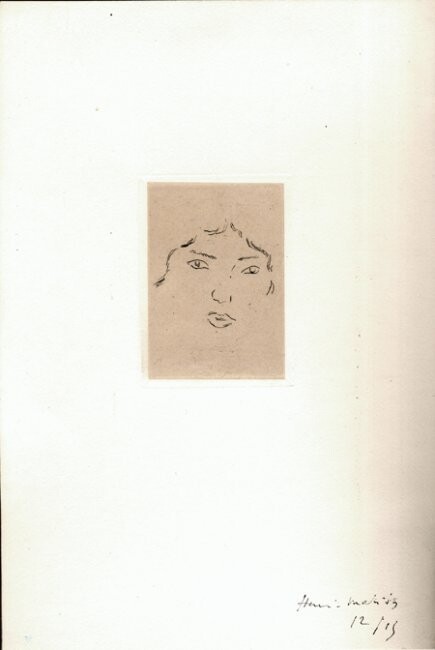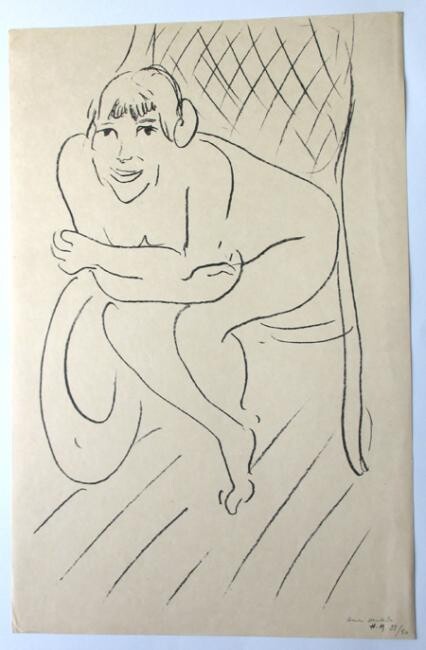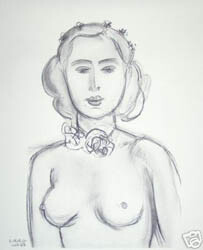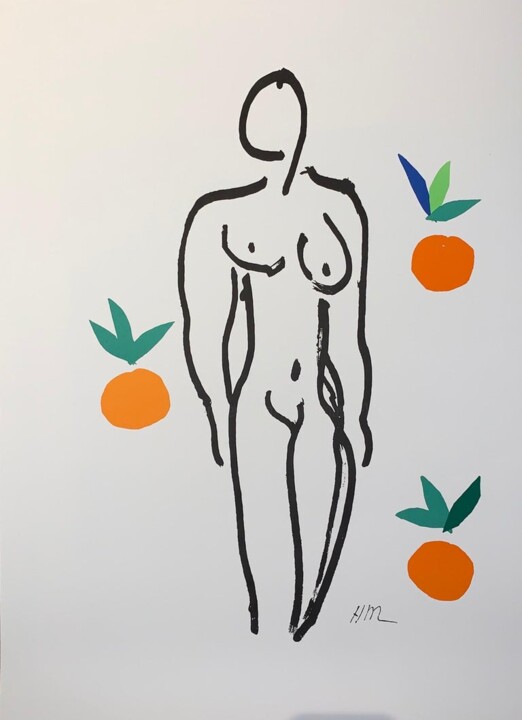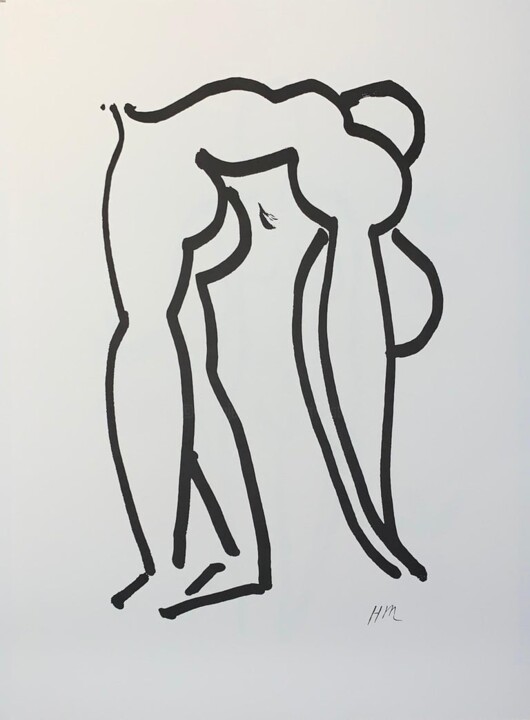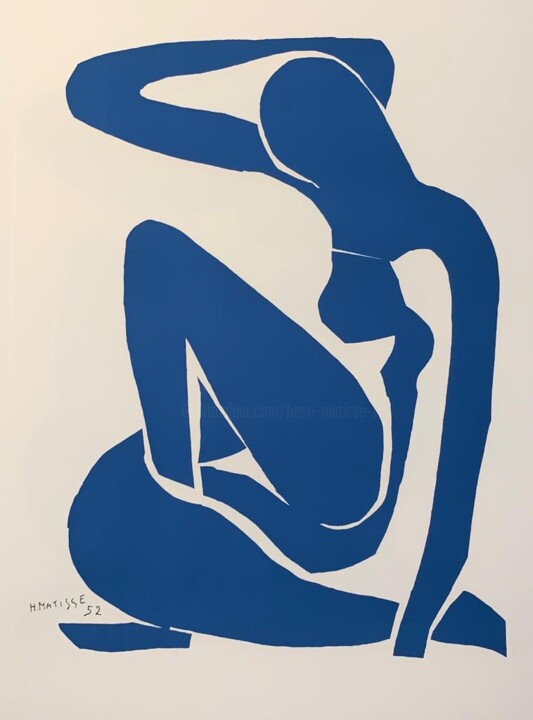Henri Émile Benoît Matisse, born on December 31, 1869, in Le Cateau-Cambrésis, France, was a pioneering French visual artist whose mastery of color and innovative draughtsmanship left an indelible mark on modern art. Renowned primarily as a painter, Matisse also excelled as a draughtsman, printmaker, and sculptor. His work, characterized by its vibrant colorism and fluid forms, positioned him alongside Pablo Picasso as one of the leading figures in the revolutionary developments in visual arts during the early twentieth century. From his early notoriety as a Fauvist to his later, more relaxed style in the 1920s and his bold cut paper collages in his final years, Matisse’s artistic journey spanned over half a century, cementing his legacy as a central figure in the evolution of modern art.
Artist Biography: Henri Matisse
Henri Matisse was born on New Year's Eve in 1869 in Le Cateau-Cambrésis, a town in Northern France. As the eldest son of a prosperous grain merchant, he was expected to follow a conventional path, and he initially did so by studying law in Paris in 1887. After qualifying, he returned to his hometown to work as a court administrator. However, in 1889, while recovering from appendicitis, Matisse's life took a dramatic turn. His mother provided him with art supplies to pass the time during his convalescence, and it was then that Matisse discovered his true passion. He described the experience as finding "a kind of paradise," leading him to pursue art, much to the disappointment of his father.
In 1891, Matisse returned to Paris to study art, enrolling at the Académie Julian and the École Nationale des Beaux-Arts under the tutelage of renowned artists such as William-Adolphe Bouguereau and Gustave Moreau. Initially, Matisse focused on still lifes and landscapes, drawing inspiration from masters like Jean-Baptiste-Siméon Chardin and Nicolas Poussin. However, his encounter with the Australian painter John Russell in 1896 proved to be a pivotal moment. Russell introduced Matisse to Impressionism and the vibrant work of Vincent van Gogh, leading Matisse to abandon his muted palette for the bright, expressive colors that would define his style. Matisse's early years as an artist were marked by personal and financial challenges. He married Amélie Noellie Parayre in 1898, and together they raised their daughter Marguerite, born from a previous relationship, as well as two sons, Jean and Pierre. The turn of the century saw Matisse experimenting with various techniques, including Divisionism, which he adopted after studying Paul Signac's work. However, financial difficulties, particularly the fallout from the Humbert Affair involving his in-laws, forced Matisse to create more saleable works during the early 1900s.
Despite these hardships, Matisse's art continued to evolve. His friendship and rivalry with Pablo Picasso, whom he met around 1906, further pushed the boundaries of his creativity. Unlike Picasso, who often painted from imagination, Matisse remained committed to drawing from nature, frequently depicting women and still lifes within richly detailed interiors. His connections with the Stein family and the Cone sisters in Paris provided crucial support during this period, helping to establish Matisse as a leading figure in the modern art movement. Matisse's artistic journey took him to new heights in the 1910s and 1920s, particularly during his time in Morocco, where he produced a series of paintings inspired by the vibrant colors and culture he encountered. His later years were marked by a significant shift in medium due to health challenges, leading him to create his famous cut-outs. These colorful paper collages, born out of necessity after a cancer diagnosis in 1941, became a revolutionary new form of expression, showcasing Matisse's unyielding creativity even in the face of physical limitations.
Brief History of Fauvism
Fauvism emerged as an avant-garde movement around 1900, reaching its zenith between 1904 and 1908. This brief but impactful movement was marked by three exhibitions and was primarily led by Henri Matisse and André Derain. The style is characterized by the use of vivid, often discordant colors, which were employed not to replicate nature but to express emotional intensity. Matisse's encounter with neo-Impressionists in St. Tropez in 1904 deepened his affinity for bright, expressive color, culminating in works like Luxe, Calme et Volupté. By 1905, during his stay in Collioure with Derain, Matisse's paintings began to embody the flat shapes and bold lines that would define Fauvism. This year also saw the infamous exhibition at the Salon d'Automne, where the works of Matisse and other artists, later dubbed "Fauves" (wild beasts), shocked critics with their audacious use of color. The term "Fauvism" itself was coined by critic Louis Vauxcelles, who, in his review, likened the artists to wild beasts in their radical approach to color. Despite its brief duration, Fauvism profoundly influenced modern art, paving the way for future movements that would prioritize emotional expression over realistic representation. Matisse, though initially criticized, continued to explore and refine his use of color and form well beyond the decline of Fauvism, securing his place as one of the 20th century’s most significant artists.
Les Nudes: Nu Bleu II (2007) by Henri Matisse
Henri Matisse, Nu Bleu II, 2007. Printmaking, Lithography on Paper, 76cm x 62cm.
In the serenity of blue, Henri Matisse captured a world both tangible and ethereal, where form and color dance in harmonious fluidity. Nu Bleu II is not merely a lithograph; it is a whisper of the ocean, a sky drenched in twilight, a body shaped by dreams. Matisse, with hands constrained by age and illness, transformed limitation into liberation, wielding scissors like a brush, cutting through paper with the precision of a sculptor. The lithograph, part of his iconic Blue Nudes series, is a testament to the simplicity and depth of his vision. Each curve, each line, is a symphony in blue—a hue Matisse revered for its ability to convey both distance and volume. The figure reclines in an eternal embrace of herself, her limbs intertwining in a pose that recalls the soft repose of earlier works, yet here, she is distilled into pure form and color. Crafted with care, the lithograph was born from the heart of France, where the paper was lovingly produced in the Arches of Vosges, and each color pressed with meticulous attention to Matisse’s original intent. Though flat, the work breathes with the dimensionality of sculpture, the overlapping cut-outs creating a relief-like texture that invites the eye to trace its contours again and again. Nu Bleu II is more than an artwork; it is a dialogue between the physical and the ephemeral, a celebration of life’s vibrant simplicity, and a reminder that even in our most limited moments, creativity can flourish in boundless ways.
Iconic Artworks
His early explorations in painting, influenced by his time in Gustave Moreau's studio, produced delicate still lifes such as Blue Pot and Lemon (1897) and Le Mur Rose (1898), which showcase his burgeoning interest in color and form. As he moved into the early 1900s, Matisse's work became increasingly bold, with pieces like Woman with a Hat (1905) capturing the daring color contrasts that would define Fauvism. The period from 1905 to 1910 saw the creation of some of his most celebrated works, including The Green Line (1905), where the use of a single, striking color accentuated the emotional depth of the portrait. Matisse’s fascination with the interplay of color and space reached a crescendo in masterpieces like Le bonheur de vivre (1905-06) and La Danse (1910), where he explored themes of joy and movement through fluid, undulating forms. His later works, such as L'Atelier Rouge (1911) and Goldfish (1912), continued to push the boundaries of color, form, and perspective, culminating in a legacy that redefined the possibilities of visual expression in the 20th century. Through his sculptures, like The Back Series and Nu couché I(1906-07), Matisse also demonstrated his mastery of three-dimensional form, further solidifying his place as a pivotal figure in the evolution of modern art.
Henri Matisse's legacy is preserved through various notable achievements and institutions. The first public acquisition of his work was Still Life with Geraniums (1910), now exhibited in the Pinakothek der Moderne. His painting The Plum Blossoms (1948) was purchased by the Museum of Modern Art in 2005 for an estimated $25 million, marking a significant moment in the art market. Additionally, in 2002, his sculpture Reclining Nude I (Dawn) set a record by selling for $9.2 million. Matisse's family played a crucial role in promoting and preserving his legacy; his daughter Marguerite, who passed away in 1982, provided valuable insights into his work, while his son Pierre established a prominent modern art gallery in New York, showcasing major European artists, including Matisse. The legacy continues with his grandson Paul Matisse, an artist and inventor, and his great-granddaughter Sophie Matisse, who is also an active artist. The Musée Matisse in Nice, one of the world's largest repositories of his work, chronicles his artistic journey and is located in the historic Villa des Arènes in Cimiez. Beyond Earth, Matisse's influence extends to outer space, with a crater on Mercury named in his honor.



 Selena Mattei
Selena Mattei

